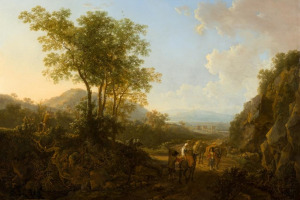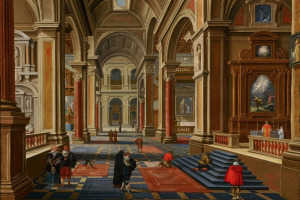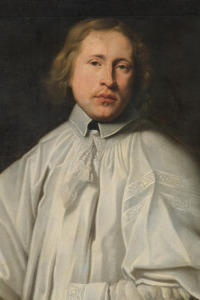Metaphors in Beowulf: How Are Metaphors Used in the Famous Poem?
 Metaphors in Beowulf are a figure of speech, used to add a little bit more interesting imagery to the famous poem. They are used in the form of characters, places, as well as kennings, and they help readers gain a better understanding of the poem.
Metaphors in Beowulf are a figure of speech, used to add a little bit more interesting imagery to the famous poem. They are used in the form of characters, places, as well as kennings, and they help readers gain a better understanding of the poem.
Figurative language as a whole is used quite often in Beowulf, and metaphors are only one part. Read this to find out how metaphors are used in the famous poem and how they help readers.
Examples of Metaphors in Beowulf
One of the examples of metaphors in Beowulf is the use of kennings. Kennings are compound words or phrases used to describe something uniquely. That is also what a metaphor does, and so kennings could go under the umbrella of metaphor.
Some kenning examples in Beowulf include things like: (all from Seamus Heaney’s translation of the poem)
- “heavy war-board”: this describes a shield
- “breast-webbing”: chain mail
- “sun-dazzle”: sunlight
Other metaphors are also included in Beowulf, and these give us a clearer picture of what the characters or places really are. The metaphors covered in this article will be related to Heorot, Beowulf, and Grendel. Heorot is considered the center of all things, and many descriptions keep returning to that metaphor, such as “wonder of the world.” It is the beating heart of a place, the safe center of souls, and Beowulf must protect it.
Beowulf’s metaphors show him to be all goodness and light, coming to protect his people. He is like God in a way, through metaphors such as he is “the shepherd of the land.” And Grendel is evil incarnate, he is almost like the devil or a demon, being called “the Lord’s outcast” among many other evil-related things.
What Is a Metaphor? Figurative Language in Beowulf
A metaphor is a figurative language, and it is a comparison between two things indirectly. Just like a simile makes comparisons through like or as (light as a feather), a metaphor does similarly, but without the like or as (He is the light of my life). Metaphors help give a greater and more powerful description of something, and for readers, it enhances the experience.
When reading Beowulf, one might be tempted to use metaphors for the main character such as “Beowulf is a god, removing evil from the world.” Beowulf is not actually a god, but in this metaphor/comparison, we see that it shows he has great power, strength, and purpose. Metaphors can be very tricky because they are not always so clear-cut, and they can be difficult to find. Sometimes, there are implied metaphors, and readers have to read closely to catch them.
Figurative language creates comparisons in unique ways. In the Beowulf, alliteration is one of the ways figurative language is used. Metaphors, similes, and personification are all examples of figurative language in Beowulf.
The Metaphors for Heorot: The Hall of Halls and a World Wonder
While a lot of the metaphors in Beowulf are related to people, there are a few metaphors related to Heorot, the mead hall. These are not as stark metaphors as some of the others, but there is an implication of what Heorot is supposed to be in the poem.
Take a look at a few of the descriptions/metaphors of Heorot below:
 “wonder of the world”: It is what the king of the Danes hopes for Heorot to become, and it was for a time. This metaphor for Heorot shows us its importance to the story and how far it falls because of Grendel’s influence
“wonder of the world”: It is what the king of the Danes hopes for Heorot to become, and it was for a time. This metaphor for Heorot shows us its importance to the story and how far it falls because of Grendel’s influence- “hall of halls”: Again, it’s shown the height of Heorot’s place in the tale. It is the center of everything, the hall of halls
- “the lofty house”: This metaphor is written just as Grendel comes creeping out of the darkness for the first time to do his damage. It reminds us of the goodness of Heorot
The Metaphors for Beowulf: God-like or Actually God?
In the poem, there are many metaphors for Beowulf that liken him to some good power, even nearing close to likening him to God.
Take a look at some of the metaphors for Beowulf below: (all taken from Seamus Heaney’s translation of the poem)
- “prince of goodness”: He is called this before he must fight against Grendel, his very first monster
- “shepherd of the land”: his kinsman calls him this when he is fighting the dragon at the end of his life
- “the lord”: his men call him this after he becomes king
- “their treasure-giver”: after he is king, he is named this as who would suffer from the dragon’s power
Each of these is part of a metaphorical phrase within the poem, and it gives us a deeper insight into who Beowulf was. At the same time, it tells us how he should be viewed by the readers. He is everything good and light, and he desires to remove evil from the world. His character could be a metaphor for God as he comes to save the earth from the darkness.
The Metaphors for Grendel: Satan Himself or Just a Demon?
The metaphors for Grendel are probably the most exciting ones used in the poem because they describe his pure evil. He is essentially evil incarnate, and readers do not really feel any sort of pity for this fully-evil villain.
Take a look at these metaphors for Grendel:
- “He was the Lord’s outcast”: As an evil creature, he would be against God, but this relates to Satan’s story. Satan himself was also cast out by God, so is Grendel a metaphor for Satan?
- “the God-cursed brute”: Again Grendel is being compared to something pushed aside and cast away by God, similar to Satan and his minions
- “the demon”: this metaphor is a little clearer, showing just how evil Grendel is by calling him such
Many other metaphors are peppered throughout the poem, but these help in showing us what Grendel’s character was meant to be. While Beowulf is the God-like character full of goodness, Grendel is the Satan-like character full of darkness and evil. Just like in the Bible, God and Satan are opposites, and good and evil are constantly in battle.
Abridged Information on the Famous Epic Poem
Taking place in Scandinavia in the 6th century, the epic poem describes the adventures of Beowulf, a young warrior. This hero had to fight against three monsters throughout the poem. The poem, was first written by an anonymous author in Old English, between the years 975 to 1025, although originally it was an oral story told from one generation to the next.
He came to help the Danes who had been struggling with the monster for twelve years. Then, he fights the monster’s mother and gains honor and rewards. When he becomes king of his own country, he later has to fight a dragon. The poem is a great example of the importance of the heroic code and chivalry in the culture at the time.
It has given scholars insight into the past in this part of the world. This unique and exciting poem has become one of the most important works of literature for the western world.
Conclusion
 Take a look at the main points about metaphors in Beowulf covered in the article above:
Take a look at the main points about metaphors in Beowulf covered in the article above:
- Metaphors in Beowulf are easily found if one knows how to look for them
- Metaphors are comparisons made between two things. They help to add more depth to a written work and help readers to see more in the story and the character
- Figurative language such as alliteration and metaphor is very commonly used in this poem
- One way metaphors are used is through kennings. Kennings are compound words or phrases replacing the original word: “whale-road” for sea
- Other metaphors make comparisons between characters and places and something else
- While there are many metaphors made in the poem, this article discusses metaphors for Heorot, the mead hall, Beowulf, the hero, and Grendel, the monster
- Heorot is the “wonder of the world,” the center of the poem and its heart and soul at the beginning
- Beowulf is the “prince of goodness,” made to seem almost god-like in his abilities. He is the representation of all that is good
- Grendel is “the Lord’s outcast” and a “powerful demon”
- It is also a battle between good and evil, shown through metaphors!
- It is one of the most important works of literature in the western world
Beowulf is full of metaphors, and these help the readers to better understand the characters and their purpose in the story. Without metaphors, we may just see Beowulf as a strong warrior, but with them, we can see that he represents God and goodness. Even if metaphors are tricky and sometimes frustrating, without them, literature and life would be just a little bit less colorful.

